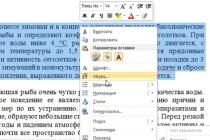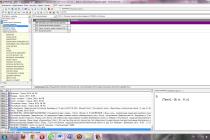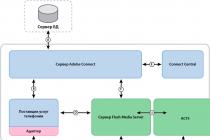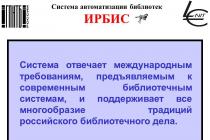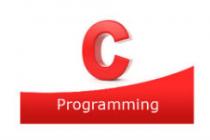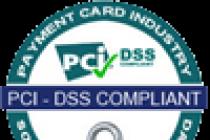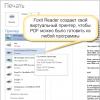MINISTRY OF EDUCATION AND SCIENCE OF THE RUSSIAN FEDERATION
Federal Agency for Education
Saint Petersburg State University of Service and Economics
Department of "Informatics"
Test.
Discipline: "Information retrieval systems"
Topic: "Library and information system" Irbis "".
Completed: 3rd year student of 89y group of specialty 080502u "Economics and management at the enterprise" Pronina Ekaterina Aleksandrovna
Gradebook number: gr. 9.03.035
Checked by: Myagkova Yu.A.
Velikiy Novgorod
2011
Content.
1. Introduction...................... ......................... ..... .............................. ............... ........ 3
2. Description of the AWS system Reader ...................... ...................... ........ ........5
3.Search …………………………………… ......... ........................ ...... ..............ten
4.Viewing ……………………………………… ..... ........................... ... ........eleven
5.Literature used …………… ………………………………… ..13
1. Introduction.
IRBIS is a library automation system (Integrated Library Information System), which is one of the recognized leaders among software products of this kind in Russia and the CIS countries.
The developer and distributor of this system is the International Association of Users and Developers of Electronic Libraries and New Information Technologies.
Currently IRBIS is used in hundreds of libraries of different scales and profiles. Its distinctive feature can be called the fact that it is focused on ordinary users who are not high-level specialists in computer technology.
The use of IRBIS, undoubtedly, greatly expands the possibilities in servicing the library's readers. It implements all the typical library technologies: acquisition, systematization, cataloging, reader search and book lending.
There are five types of automated workstations in the system: "Picker", "Cataloguer", "Reader", "Book Distribution", "Administrator".
Main characteristics of the system:
- Work in local area networks of any type without limiting the number of users.
Full integrability into corporate library systems and technologies based on: Web technologies and Z39.50 protocol support; full compatibility with the international formats UNIMARC, MARC21 and the Russian communication format RUSMARC.
Support for an arbitrary number of databases that make up an electronic catalog.
The technology of automatic formation of dictionaries with the implementation of a quick search for any description elements and their combinations.
Means for maintaining and using authority files, thesaurus and alphabetic subject indexes to UDC and LBC.
Support for traditional "paper" technologies: from printing order sheets and summary book to printing all types of index cards.
- Support of technologies for automatic identification of library stock documents and library cards based on bar coding.
Support for full text, graphics, and other external objects (including Internet resources).
Tools for translating user interfaces into other languages.
A wide range of service tools that provide convenience and clarity of user interfaces, simplify the input process, eliminate errors and duplication of information.
Ample opportunities for adaptation to the working conditions of a particular library, including the means of creating unique work profiles for all categories of users.
The openness of the system, which allows the user to independently make changes in a wide range: from changing input and output forms to developing original applications.
Administrator - to work with the databases of the system as a whole (ensuring the safety and keeping up to date);
Collection set - a program that allows you to perform the functions of acquiring and keeping records of library funds;
Cataloguer - for the formation of databases of the electronic catalog (database of readers and the database of the alphabetical-subject index), performing a search in bibliographic databases with subsequent correction, copying, viewing and printing of the found documents;
Book lending is the workplace of a librarian who performs the functions of lending literature in accordance with the generated orders and returning it. Orders formed on the Reader's AWPs are automatically sent to the Book Distribution AWS.
The reader is the workplace of the end user of the electronic catalog.
2. Description of the AWP system Reader.
The IRBIS system is oriented to work in a local computer network (LAN) and is a set of interconnected automated workstations (AWP) of five types:
Workstation "KOMPLEKTATOR" - is a workstation of a librarian who performs the functions of acquiring and accounting for library funds based on maintaining a special database (DB);
Workstation "CATALOGIZATOR" is a workstation of a librarian who performs cataloging and systematization of publications, ie. functions for the formation of databases of the Electronic Catalog;
AWS "READER" - is a workstation of the end user of the Electronic Catalog and is intended for a comprehensive search in the Electronic Catalog, viewing / printing the information found and forming an order for the issuance of the found literature;
AWS "KNIGOVYDACH" - is a workstation of a librarian who performs the functions of issuing literature in accordance with the generated orders and returning it;
AWS "ADMINISTRATOR" is a workstation of a specialist performing system operations on databases in general, aimed at keeping them up to date.
Let's dwell in more detail on each of the AWPs.
Workstation "KOMPLEKTATOR" - provides the solution of the following tasks on the basis of maintaining a special database:
For PERIODIC and CONTINUING EDITIONS:
- primary input of brief bibliographic information and ordering data, registration of subscription documents (subscription cards and order sheets); the possibility of a centralized subscription is provided (to different addresses, the details of the addressees are entered into the database once by the user);
transfer of the record to the EC after receiving the first issue of the issued edition with the subsequent registration of the next receipts;
automatic preparation of a record for the next order for the next subscription period (replacement of the value of the year / half year) with the preservation and accumulation of data on previous orders of the publication; the correction of the changed details (price, frequency, etc.) is carried out by the user.
For NON-PERIODIC PUBLICATIONS:
- entry of brief bibliographic data and registration of order documents for books and other publications (order cards, letters-envelopes to the address of the corresponding publishing, distributing or bookselling organizations, the details of which are entered by the user once in the database);
tracking the fulfillment of orders, control of outstanding or unfulfilled orders;
control of the receipt of literature in the library, input of data for the Summary Book (KSU) about the received batch, receipt of a document for accounting;
automatic transfer of the record for cataloging - to the database of the Electronic Catalog - upon receipt of the first (or all) of the ordered copies (documents for individual accounting - sheets of the Inventory Book and / or sheets of act registration - are prepared automatically after the cataloging of the received batch of books is completed);
obtaining other typical output forms, in particular, when writing off and moving literature.
AWS "Cataloguer". In a LAN environment, the system ensures the functioning of an arbitrary number of "Cataloguer" AWPs with the ability to simultaneously change / replenish one database.
For the formation of a database of the Electronic Catalog AWS "Cataloguer" offers a technology in which the following main characteristics can be distinguished:
- A bibliographic description structure based on the UNIMARC international standard. It is possible - in accordance with the user's requirements - to change this structure (both towards simplification and towards additions);
A wide range of worksheets (screen forms) focused on various types of bibliographic description;
The original technology for describing serial publications (magazines), which provides, on the one hand, the availability of a summary description of the publication as a whole, including information about the receipt of all its issues (volumes), and on the other hand, the presence of a description of a separate issue, which may contain information about its constituent parts. articles;
Automated technology of linguistic processing (systematization, subjectization, indexing) of publications, including the apparatus of thematic navigation through the GRNTI Rubricator, the subject headings dictionary and / or thesaurus;
Special technology for copying data, eliminating the need for re-entry when creating similar bibliographic descriptions, in particular, when processing multivolume (continuing) editions;
A wide range of service data entry tools that simplify the input process and reduce the likelihood of errors, in particular, reference menus, dictionaries, nested worksheets (eliminating the need to enter special separators of data elements);
The system of formal-logical data control both at the level of individual bibliographic elements and at the level of description as a whole - significantly reduces the likelihood of errors in the input process;
The original technology of automatic verification for doubletness, which excludes the repeated entry into the database of the Electronic Catalog of the description of the edition already present in the database;
Possibility of connecting graphic data and full texts of source documents to bibliographic descriptions;
A wide range of output forms for presenting bibliographic descriptions. Automated technology for obtaining a complete set of catalog cards - implemented directly in the process of creating (entering) a bibliographic description;
A wide range of search tools designed to search for documents (bibliographic descriptions) for the purpose of their further correction or copying.
AWS "Reader". In a LAN environment, the system provides the ability to simultaneously search the same databases of the Electronic Catalog by an arbitrary number of users, i.e. simultaneous operation of an arbitrary number of "Reader" AWPs is provided.
The following main characteristics of the "Reader" workstation should be noted:
- Comfortable, user-friendly interface designed for a user who does not have any special knowledge;
Taking into account different levels of user training, i.e. the same result can be achieved both by performing a sequence of simple operations designed for a novice user, and by performing one non-trivial operation designed for a trained user;
Availability of a wide range of search tools that provide fast (by direct access through dictionaries) search in the database of the Electronic Catalog for all the main elements of the bibliographic description and their combinations. In addition, the user is given the opportunity to view graphic data and full texts - if any, - associated with the found documents;
Ability to work with several databases that make up the Electronic Catalog;
Availability of paperless technology for forming an order for the issuance of literature.
The following main characteristics of the "Book Distribution" AWS can be noted:
- A simple and convenient technology for keeping a queue of orders for the issuance of literature and fixing their execution, based on the menu;
Availability of operational - updated in real time - information about free copies of ordered literature;
Availability of operational - updated in real time - information about issued literature and readers who have it in their hands;
A simple technology for fixing the fact of the return of literature and the release of the corresponding copy;
Accounting for all information about the issuance / return of literature in individual cards (documents) of readers;
Possibility of obtaining statistical information about the functioning of book lending - in particular, about debtors, literature detained by readers and the number of issues (literature circulation);
Special technology of book distribution based on bar-coding of copies.
The system provides the user with configuration tools, which, in particular, make it possible to determine the user level of each specific workstation (PC), i.e. determine which AWPs are available at this workplace, and thereby determine the type of the Main menu of the system (for the DOS version).
AWP Reader is used to search library databases, view, print found documents and form an order for the issuance of found literature.
When you start the AWP Reader program, a registration window appears, in which you need to enter the reader's identifier or full name.
Having filled out the card correctly, you can start working with the library catalogs.
Functionally, the AWS interface consists of two main work planes: Search and View. As you can see from the figure, working with the database is simple and straightforward. In order to find a book or information of interest to us, you need to make a current request.
Main characteristics:
- User-friendly interface designed for the user who does not have any special knowledge
Availability of a wide range of search tools that provide quick search in the database of the Electronic Catalog for all the main elements of the bibliographic description and their combinations
The presence of the "advanced user" mode, which provides information search on any grounds present in the Electronic Catalog or their arbitrary combinations.
Possibility of access to the workstation via the Internet.
Availability of paperless technology for forming an order for the issuance of literature with its automatic transfer to the storage.
Ability to work with the entire list of found documents, including combining query results, searching in the found, storing lists of documents in the system database, printing lists.
The ability to print requirements in a given format.
3. Search
The following components are located on the Search working window:
database - selection of the database in which the search is supposed to be conducted;
search type - selection of an element of the bibliographic description and the corresponding dictionary by which it is supposed to conduct a search in the established database;
dictionary - working with a dictionary corresponding to the selected type of search in order to select search terms for the current query;
current request - the wording of a request for the next search;
executed queries - accumulation of information about executed queries and their use in the current query for the purpose of refinement or merging.
So, to begin with, let's define the type of search. It can be produced according to various parameters:
keywords;
author;
thematic rubricator;
type, type of document;
the nature of the document;
title;
team, event;
subject headings;
geographical headings;
country of publication;
language;
the year of publishing;
magazine for the year;
publishing organization;
ISBN / ISSN; 496
document code;
physical media, etc .;
Naturally, each type of search has its own characteristics. When you select one or another type of search, a dictionary is automatically generated containing a list of key terms (for this search), and information is also displayed about how many documents contain the corresponding key term.
For the type of search we are interested in, we select keywords from the dictionary, compose a query and press the Run button. After that, in the Completed requests field, reflect
etc.................
Introduction
1. Library automation system IRBIS
Conclusion
Full compatibility with international formats UNIMARC, MARC21. and the Russian communication format RUSMARC
The system supports an arbitrary number of databases that make up the Electronic Catalog or are problem-oriented bibliographic databases. The technology of automatic formation of dictionaries has been introduced, on the basis of which a quick search for any elements of description and their combinations is realized; means for maintaining and using Authoritative files, the Alphabetical Subject Index to the UDC / LBC and the Thesaurus;
The program implements support for traditional "paper" technologies: from printing order sheets and a summary book to printing all types of catalog cards; support for full text, graphics, and other external objects (including Internet resources).
The program allows the use of technologies focused on the use of barcodes on copies of publications and library cards.
The system includes tools for translating user interfaces into other languages.
A wide range of service tools provides convenience and clarity of user interfaces that simplify the input process, eliminating errors and duplication of information.
The system can be easily adapted to the working conditions of a particular library.
Openness allows the user to independently make changes in a wide range: from changing input and output forms to developing original applications.
The system implements all typical library technologies, including acquisition, systematization, cataloging, reader search, book lending and administration technologies, based on the interconnected functioning of five types of automated workstations (AWS):
AWP "Complector"
AWS "Cataloguer"
AWP "Reader"
AWS "Book Distribution"
AWP "Administrator"
AWP "BOOKING SUPPLY"
Workstation "Complectator" allows you to:
Preliminary description and execution of order documents for books and other publications with the possibility of using machine-readable plans of publishing houses; control of order fulfillment;
Registration of the receipt of literature, input of primary data for the summary book (KSU);
Transfer of descriptions for cataloging and information on completing to the electronic catalog;
Subscription of periodicals (subscription cards and order sheets) with the possibility of using machine-readable subscription catalogs; prolongation of the subscription;
Transfer of descriptions of periodicals to the electronic catalog with the subsequent registration of the next receipts;
Writing off literature - including the processes of disposing of literature from the fund and moving it from one department to another;
Typical output forms - inventory lists, KSU sheets, summary data on the receipt of literature in the fund, acts of writing off literature, etc.
Workstation "Cataloguer" processes any kind of publications, including audio and video materials, electronic resources, cartographic materials, sheet music, etc., any completeness of description, including the table of contents of journals and the content of collections.
Descriptions of periodicals can be obtained at the consolidated level and at the level of individual issues and "file sets", taking into account information about the articles included in them.
In the "Cataloguer" the technology of indexing publications (systematization, subjectization) includes the automatic formation of the author's mark and the navigation apparatus for the GRNTI heading, the UDC / LBC alphabetical-subject index, the authoritative file of subject headings and thesaurus.
The data copying technology excludes re-entry when creating similar and related bibliographic descriptions, in particular, when creating analytical descriptions.
The program has a system of formal-logical control of data, both at the level of individual bibliographic elements and at the level of description as a whole, and an original technology for automatic verification for duplication, which excludes re-entry into the electronic catalog.
With the help of the "Cataloguer", the problem of book supply and inventory-free accounting of multi-copy literature for university libraries can be solved.
The output forms used are indexes, inventory lists, lists of journal issues that have not been received, etc.
Workstation "Administrator" is a workstation of a specialist performing system operations on databases in general, aimed at maintaining their relevance, integrity and safety.
The automated workstation AWS "Book Distribution" implements the technology of forming and maintaining a queue of electronic orders for the issuance of literature and recording their execution, as well as the technology of recording the return of literature. With the help of the program, you can get operational information about free copies of ordered literature, about the issued literature and the readers who have it on hand.
Accounting for information about the issuance / return of literature is carried out in individual cards (documents) of readers. The program allows you to get statistics on debts and literature demand. A special technology of book distribution based on bar-coding of copies and library tickets has also been implemented.
The "Reader" AWS is characterized by a friendly interface designed for a user who does not have any special knowledge. The program takes into account various levels of user training. The undoubted advantage of the system is a wide range of search tools that provide fast (by direct access through dictionaries) search in the databases of the electronic catalog for any elements of description and their combinations. It is possible to work with several databases that make up the electronic catalog. The user has the opportunity to use the paperless technology of forming an order for the issuance of literature.
AWS "KNIGOOSEPHENNOST" is intended for maintaining a database of academic disciplines related to databases of readers (students) and catalogs. The user-friendly interface displays all the options for connections between academic disciplines, students and literature.
The calculation of book supply ratios is carried out taking into account the following provisions:
Determining the number of students and the number of copies online,
Taking into account the possibility of using one textbook by students for several disciplines,
Accounting for the availability of copies intended for certain categories of students ("allocated funds"),
Taking into account the possibility of multiple use of the textbook by sequentially different groups of students during one semester;
The program provides for the formation of tables of book availability coefficients for any subset of literature for a given semester and the formation of various output forms, including "Provision of students with literature from the university fund" in accordance with the requirements of the Ministry of Education.
Web-IRBIS software is designed to provide Internet users with access to electronic catalogs and other bibliographic databases of IRBIS. Web-IRBIS is used as one of the main components of library Internet servers and Internet complexes.
All functions are fully managed by the administrator, including setting up search forms, adding and removing search fields, setting up their attributes, enabling rubricators and static dictionaries. Elements of support for electronic document delivery services and direct access to full texts (if any) based on search results have been introduced. Authorized access technology is not built on the level of standard web server methods, but on the basis of original solutions using dynamically generated pages and libraries of form files. This was first implemented with the aim of expanding adaptability to specific conditions and increasing resilience to unauthorized access. Web-IRBIS has built-in support for including links to full-text documents in the electronic catalog. At the same time, a free technology of forming links in the form of URLs has been implemented, which makes it possible to use this not only for the formation of your own collection of full texts, but also for cataloging and inclusion in the database of Internet resources, which is extremely important in modern conditions. Thus, Web-IRBIS can be used as a basic technology for creating virtual and electronic libraries. The process of creating links is quite simple and is fully integrated with the IRBIS technology. Web-IRBIS provides a high speed of execution of queries of varying degrees of complexity. Web-IRBIS provides support for extended formats, setting delivery parameters; allows the possibility of using advanced means of forming queries, the use of several terms in one field; has advanced service functions.
Web-IRBIS is based on the following set of main components:
1. The module for providing communication between the web server and the database, created on the basis of CGI technology for web servers Apache, WebSite. In addition, it enables the software to work with any other server that supports this technology, which is the standard for running applications on the Internet. For IIS, the internal API support technology is used. Modules using CGI are executed in the form of executable programs, API - in the form of dynamic libraries. These modules are the only ones specific to various web servers - all the rest do not depend on the type of specified servers and methods of interaction.
2. Modules of search and formatting of results are common for Web-IRBIS and IRBIS and are made in the form of dynamic libraries. They are controlled by the communication module and provide search and output of preformatted results in accordance with the transmitted parameters. The final formatting and conversion to HTML is done by the link module.
3. The library of form files is the basis of the secure authorized access technology. The developed algorithm will make it possible not to permanently store search pages and pages for displaying results - they are created when a request to perform an operation is received and are deleted after the process is completed. Therefore, it is impossible to carry out unauthorized access to all modes from the Internet.
4. Technological databases. Contains information about registration of remote users and received orders.
5. Tree of static pages. Used for initial study and as examples to design your server.
The main system characteristics of Web-IRBIS are as follows:
Full compatibility with all components of the IRBIS family;
Unified technology for servicing local and remote users;
Unified technology for servicing inquiries received online and by e-mail;
Full compatibility of the descriptions of the input worksheets to ensure the cataloging process with the network version of the system;
The ability to use a single bibliographic array both for technological operations and for servicing local and remote users;
Availability of support functions for electronic libraries, electronic delivery of documents and IBA;
Availability of support functions for distributed corporate systems and multi-branch networks;
Availability of a simple and convenient billing and user authorization system;
Ability to work with any number of bibliographic databases, including simultaneously;
The ability to form a query in fixed and free forms using most of the information retrieval operations;
Ability to use any user-defined output formats, including RUSMARC, UNIMARC, MARC21.
The user of the Web-IRBIS system can perform a number of basic operations:
1) Search in an arbitrary database with the IRBIS structure, by an unlimited number of fields, by any description elements and their combinations, with the ability to define prefixes and qualifiers for search terms, normalize words and apply the truncation apparatus
2) Use of static dictionaries and rubrics included in search forms or connected from the outside in the search, with the ability to combine dictionary elements with any other search prescriptions;
3) The use of dynamic database dictionaries, with the ability to obtain a list of dictionary terms with subsequent search for the selected terms; navigation through dictionaries, including the task of starting scanning by the first characters, and in terms of "next", "previous";
4) Display of records from an arbitrary database in all types of standard formats, including information, in the form of a catalog card, in tags and decrypted RUSMARC, UNIMARC, MARC21. It is possible to use any formats defined by the user in the IRBIS notation;
5) Quantization of output records in a user-defined format, followed by navigation in terms of "next", "previous";
6) Selecting records from among those found, with their subsequent processing, including unloading selected records in standard RUSMARC, UNIMARC, MARC21 formats;
7) Cataloging in three modes:
cataloging new or read documents by number;
cataloging the found portion of documents;
cataloging of imported documents;
Web-IRBIS is a reliable and convenient platform for the implementation of library Internet applications and their subsequent integration into a single library Internet complex. Web-IRBIS - is constantly being improved and modified, new functions and capabilities are being added, integration with other subsystems of the IRBIS family is deepening. The outsourcing service IRBIShost was built on its basis. User support is provided both in the traditional way and through the Internet conferencing system.
At present, the Russian National Public Library for Science and Technology has created the IRBIS64 subsystem to create full-text databases. The documents of these databases can be texts in TXT, DOC, RTF, PDF, HTM, HTML formats. This subsystem implements the semantic analysis of texts. Approaches to solving the problem of semantic processing of texts can be formulated in the following stages:
1. Creation of a full-text database from an array of texts.
2. Natural-thematic classification of texts based on the selection of significant terms in the subject area. Thematic classification allows you to compare texts with each other for their closeness in meaning. A subject classifier is a set of subject vocabularies that include terms that are significant in a given subject area.
The IRBIS64 full-text database subsystem includes:
1. Extended AWP "Administrator", which, in addition to standard functions, includes additional modes for working with full-text databases.
2. AWS of the end user (reader) for searching and viewing in full-text databases. This workstation implements special search algorithms:
Search by query in natural language.
Search for similar texts to text from a full-text database in a user-defined thematic context.
Search for similar texts to external (in relation to the full-text database) text in a user-defined thematic context.
In addition to the end user (reader), the system is focused on an expert user, whose task includes preliminary work on the creation of a full-text database and natural-thematic classification of texts. In addition, the system will allow experts and classifiers to work with full-text collections of the library in the mode of intelligent semantic analysis of texts. (All these functions are implemented in the extended workstation "Administrator").
2. Implementation and use of IRBIS
The selection management process and software selection for library automation tasks, as well as implementation, can be represented by the following components:
1. Determination of the types of work that are subject to automation.
2. Correspondence of software capabilities to automation tasks.
3. Determination of the required computing resources for automation.
4. Presentation of the main stages of software implementation and drawing up a preliminary plan.
5. Analysis of the data obtained and making a final decision.
6. Settings. Software technology issues.
7. Administration of the program.
To carry out automation it is necessary:
Qualified personnel;
Support for the main goals of automation by the team, founder, sponsors;
Availability of consultants who participated in similar projects;
Proven (tested) software.
The process of implementing any automation system in libraries can be viewed from different angles. First, it is the administrative component; it is, perhaps, the most important at the stage of software selection and creation of technological interaction between system users. Secondly, it is a professional component, the one that allows a person whose work is being automated to work comfortably in this program. And the third component is the user of library resources, the person who receives bibliographic information at the output of the entire automated chain.
The introduction of any software product (especially a licensed and expensive one) should be started with an acquaintance with its demo version.
Introducing the program “IRBIS”, libraries are faced with the need for a deep study of the technological processes of the library, their optimization. This sometimes requires the creation of a new structural unit, for example, a sector for technological support of library processes, which is responsible for observing the technology of work in the IRBIS environment, analyzes the processes, and develops optimal and coordinated solutions when introducing (and subsequently operating) program modules.
Automation of any area of work requires additional costs for the period of "transition" of technologies. At the same time, it is necessary to support financially both traditional technologies and increasingly voracious new ones. Depending on the needs and capabilities of libraries, the process of mastering new technologies can be very slow or very fast.
For the successful functioning of the IRBIS system, it may be necessary to significantly modernize the computer equipment park, organize new automated workstations. To implement barcoding technology, it is necessary to purchase a thermal transfer printer, hand-held laser scanners.
For the implementation of IRBIS, it is necessary to develop a plan for the implementation of the system, including technical, technological, organizational and methodological aspects, as well as retraining of personnel. As a rule, it is necessary to solve the following tasks:
Upgrade your PC and peripheral fleet:
Train personnel to work in the IRBIS environment;
Convert existing EC and DB libraries;
Introduce the modules "Kitator", "Cataloguer", "Reader", "Book Distribution", using bar-coding technology to serve readers and manage the fund;
Modernize the WEB-site of the library and publish the database using the IRBIS technology.
First of all, it is necessary to analyze the existing database maintenance technology and determine the sequence of work, as well as the resources necessary for their implementation.
Obviously, one of the key issues in the development of IRBIS is personnel training, overcoming psychological barriers that inevitably arise both for those who first start using computer technologies (employees of subscription departments), and for personnel of departments who have been successfully working for several years using other programs, for example, "Library" (in the latter case it is caused by fundamental differences existing in the programs IRBIS and "Library"). The professional development plan must be drawn up taking into account the level of knowledge of computer technologies of specific employees (based on preliminary testing and questionnaires). The plan may provide for the solution of various tasks: from acquiring initial skills in working with a PC, mastering Windows OS, to a detailed study of individual IRBIS modules.
According to the plan, the development of IRBIS should be carried out in several directions at once, which requires wide involvement of the personnel of most departments, well-thought-out and interconnected decisions.
At the stage of creating a technical task for conversion from previously used programs, difficulties may arise associated with the inconsistency of the EC records of the library with the requirements of the USMARC format, incorrect filling of the fields by the cataloguers of the library. Therefore, it is required to analyze almost every EC field. Those fields that cannot be corrected by software have to be edited manually. The creation of a technical assignment also requires an in-depth study of the USMARC, UNIMARC, RUSMARC formats.
Thus, as a result of the work carried out, it is possible not only to prepare the database for conversion, but also to significantly improve the quality of the library's EC and database, to improve the qualifications of employees in the field of machine-readable formats.
The following tasks are solved using bar coding technology:
1. Acceleration of the processes of issuing and receiving literature, reducing the time the reader waits for a book up to 10 minutes;
2. Simplification of the issuance and return of literature for the reader (rejection of book forms and reader requirements);
3. Elimination of mechanical errors when accepting / lending books;
4. Acceleration of processing of new receipts by reducing the number of transactions;
5. Cost savings: labeling of pockets and printing of book forms, purchase of reader forms becomes unnecessary.
Barcoding in the library is used not only to automate book lending, but also inventory. However, human participation in the inventory process is quite large. And therefore the human factor plays an important role, which cannot be ignored.
It should be noted that when carrying out an inventory, it is necessary, in advance or in parallel, to verify the compliance of the barcodes on the labels with identifiable material values. This requirement is due to the fact that one of the main problems is the so-called re-grading, when, say, on a chair, a barcode corresponding to the table is glued.
Another problem is the need to create a "snapshot" of the position of material assets at the time of the inventory. If the movement of material values does not stop during the inventory process, then some bar codes may not be read, and then the system will issue a message about the shortage, although the corresponding values are available.
The issues discussed above must be monitored without fail during the inventory, which will reduce the errors of the inspectors to zero. Otherwise, the reliability of the inventory results may be in doubt.
The introduction of automated technology is preceded by a lot of preparatory work, an action plan for the introduction of a new technology should be drawn up, priority areas of activity should be determined:
1. Purchase and installation of equipment, training of library staff;
2. Bulk printing of barcodes on books using hot start technology;
3. Assignment of a barcode to the active part of the fund (before issuance and after return);
4. Bulk printing of stickers for library cards. Assignment of SK to library cards as readers arrive at the scientific literature subscription.
At the next stage, it is necessary to develop a technical assignment (TOR) for the creation of the database "Reader" (determination of the list and content of fields, the composition of dictionaries). When creating a TK, it is necessary to take into account the existing technology of working with the reader in the library: registration, re-registration, work with indebted readers, types of accounting documents, etc.
It should be noted that no automation system will work if:
The collective is hostile (there is no motivation for implementation or, what is worse, there is a motivation for non-implementation);
There is no plan for the implementation of the automation system;
No one sees at least medium-term forecasts of the operation of such a system and does not guess what all this is for;
The stages of the automation program and the persons responsible for mastering the assigned tasks have not been determined;
There are no qualified performers at any stage of the work.
At this time, there is no automation software that satisfies all the needs of librarians, and, accordingly, is able to solve all of the above tasks. Therefore, the question of the directions of automation of each library, the use of one system of programs or work with several different software products to increase efficiency is especially acute.
Conclusion
The developer and distributor of the IRBIS system is the International Association of Users and Developers of Electronic Libraries and New Information Technologies. Founders of the Association: States. Public Scientific and Technical Library (RNSTL) of Russia, etc.
In Russia and the CIS countries, the IRBIS system is one of the recognized leaders among software products of this kind. Currently IRBIS is used in hundreds of libraries of different scales and profiles. A distinctive feature of IRBIS is that it is aimed at users who are not high-level specialists in computing. The use of IRBIS, undoubtedly, greatly expands the possibilities in servicing the library's readers. Irbis has ample opportunities to adapt to the working conditions of a particular library, i.e. When transferring and installing the system, customization can be made in accordance with the specific requirements of the user.
The advantageous sides of IRBIS are that:
all major library processes are automated as independently functioning subsystems;
IRBIS meets international requirements and international library formats;
Russian interface greatly facilitates the development of IRBIS;
relative cheapness;
All standard library technologies are implemented in this system. These are technologies of acquisition, systematization, cataloging, reader search, and book distribution.
There are five types of automated workstations in the system: "Picker", "Cataloguer", "Reader", "Book Distribution", "Administrator".
The system allows you to create and maintain any number of databases that make up an electronic catalog. Dictionaries are automatically generated, you can quickly search for any description elements and their combinations. Cataloging tools allow you to process and describe any kind of publications (books, magazines, video material, CD-ROM). The system supports traditional "paper technologies": from printing order sheets to printing all types of index cards. The reader can search the electronic catalog: by keywords, by author, by title, by year of publication, by UDC, by subject heading, etc.
The following order of implementation of Irbis in the library is recommended: Collection set - Catalogue - Book distribution - Reader. AWP Reader should be implemented only if the entire catalog (or a significant, important, requested part) has already been filled into the database. Otherwise, if there is very little there, then there is no sense in the Reader. In addition, the Reader is really needed for e-book distribution, and for this you must first introduce this book distribution. Almost every AWP is logically tied to some other, however, the Set and Cataloger are not only logically connected, but also physically, so it is advisable to start implementation with them.
Bibliography
Brodovsky A. I., Sboychakov K. O. New generation of the library automation system IRBIS - IRBIS64: from electronic catalog to full-text databases // Libraries and associations in a changing world: new technologies and new forms of cooperation: Tr. Conf. - M., 2004.
Brodovsky A. I., Sboychakov K. O. Full-text databases in the IRBIS64 system - the Eighth International Conference and Exhibition "LIBCOM-2004", "Information technologies, computer systems and publishing products for libraries" November 15 - 19, 2004 http: //www.gpntb.ru/libcom4/index3.cfm?n=tez/doc1/doc8
A.S. Karaush Automated technology of creation of communication fields in the IRBIS System // "Information technologies, computer systems and publishing products for libraries": Materials of MK "LIBCOM-2002". - M .: State Public Library for Science and Technology of Russia, 2002 .-- S. 120-121.
Karaush A.S. Optimization & Automation. The tasks of informatization in librarianship // Librarianship - 2005. - No. 1. - P. 27-28.
A.S. Karaush Software for automatic synchronization of databases of the IRBIS system / A.S. Karaush, D.Yu. Kopytkov // Scientific. and tech. libraries - 2003. - No. 10. - P. 88-91.
Lapo P.M., Sokolov A.V. Introduction to Digital Libraries, 2005.http: //natlib.org.by/html/news2005/7july/data/PDF.pdf
International Association of Users and Developers of Electronic Libraries and New Information Technologies (ELNIT Association) http://www.elnit.ru/
Sboychakov KO Prospects for the development of IRBIS in terms of using the system of semantic analysis of texts to create full-text repositories of knowledge in a modern library // Libraries and associations in a changing world: new technologies and new forms of cooperation: Tr. Conf. - M., 2003. - T.1. - C.122-125.
Shraiberg J.L. The main provisions and principles of the development of automated library information systems and networks: The main trends of the environment, the main provisions and prerequisites, basic principles: Monograph.— M.: State Public Library for Science and Technology of Russia, 2000.
International Association of Users and Developers of Electronic Libraries and New Information Technologies (ELNIT Association) http://www.elnit.ru/
Russia, Kirov Vyatka State Humanitarian University Scientific Library Head of the Department of Scientific Processing of Literature Vorobyeva Maria Anatolyevna IRBIS as a means of creating an electronic resource of the library The goal of any library is to ensure the availability of information resources. Information technology greatly expands the activities of libraries. The automation of library and information technologies is accompanied by the creation of electronic information resources, the support and maintenance of which is possible only in automated modes. Automation makes fundamental changes in the composition, structure and functioning of the SBA. In the bibliographic field, automation usually begins with the formation of an electronic catalog based on the complete processing of new acquisitions of all types of non-periodical publications. The electronic catalog is a representative of the main information resource of the library. Having mastered the technology and possessing sufficient material and technical resources, libraries are gradually forming a complete EC as a retrospective bibliographic source. In the scientific library of VyatSGU EC of new acquisitions has been conducted since 1998. The program, in which the work on the creation of the electronic catalog was started, ceased to meet the needs of the library for a number of reasons. Therefore, it was decided to purchase a new AIBS. Requirements for AIBS for the most comfortable and fruitful work: support for an arbitrary number of databases; technology of automatic formation of dictionaries, on the basis of which a quick search for any elements of description is realized; support for printing technologies. At present, the library of VyatSGU uses the version of the library automation system IRBIS. IRBIS is an integrated expandable library and information system. Supports UNIMARK, USMARK and Russian communication formats. Reasons for choosing IRBIS: 1) it is a system of complex automation, covering all library technologies - acquisition, systematization, cataloging, reader search, lending and administration, based on the functioning of five types of automated workstations: "Picker", "Cataloguer", "Reader", "Loan", "Administrator"; 2) IRBIS has the ability to support the traditional (paper) model of document management in the library; 3) supports work in a local network, which makes it possible to expand the use of the system; the system allows you to create and maintain any number of databases that make up the EC or are problem-oriented bibliographic databases. At the present time, the main AWPs "Komplektator", "Cataloguer", "Reader", "Administrator" have been introduced into the work. One of the main information resources of the library is EC, therefore it was important to preserve the information that was available in the old system. By the time of transition to the IRBIS system, the EC contained more than 25 thousand records. The programmers carried out the conversion of records from this database into IRBIS, a working group created from library specialists carried out the correction and editing of bibliographic records. At the same time, two departments of the library - the department of scientific processing and the reference-bibliographic and information department, directly related to the maintenance of EC, began to create a database of new acquisitions of books and analytical descriptions of articles from periodicals and books (at the moment, the EC contains more than 59 thousand records with taking into account converted knowledge base for books and articles from the old program). When creating a unified database for books and articles from periodicals and other types of documents, we were guided by the fact that our readers prefer to conduct a thematic search in catalogs and card indexes at the same time and that there is a local network in the library that unites the departments of acquisition, scientific processing of literature and reference-bibliographic and information department. The presence of all elements in the database allows the EC to combine the functions of all types of catalogs (alphabetical, systematic and subject) and card files (SCS, thematic, personal files, etc.). AWS "Cataloguer" provides the most complete description of all types and types of documents - one-volume, multivolume, serial, periodicals, or articles from any of the listed types of documents. Detailed detailing of BO elements makes it possible, with a single introduction, to reuse them to obtain various output and display forms, search scenarios. When entering, a formally logical control of a part of the data is automatically carried out and a check for duplication of newly entered documents in the EC is carried out, which helps to avoid duplication of the bibliographic description for documents already in the library fund and add information about newly received copies to previously created records. IRBIS contains such a convenient means of correcting input errors as dictionary correction, when simultaneously with the correction of an erroneous search term, all EC documents associated with this term are also corrected. Starting to work in IRBIS, we tried to study as fully as possible the capabilities of the system. Almost immediately, the question arose about the formation of authoritative files of subject headings, individual authors (for carrying out thematic search by persons), descriptors. The created Thesaurus is updated centrally (when new topics and requests appear). It was necessary to decide - which fields to fill in, which not, to formulate the designation of the storage locations of the document (room No. 1, room No. 2, D, etc.). In addition to entering new acquisitions into the EC, the old entries are gradually being retrofitted, parts of such departments as regional studies, science, and fiction have been introduced. Speaking about the accessibility of information resources, and in particular the accessibility of the EC for the user, it should be noted that the "Reader" AWS is presented for readers in the information resources room of our library. So that readers can use the EC through the Internet, it was transferred to the website of our university. AWS "Reader" repeats AWS "Cataloguer" databases with a different access level and excluding the possibility of correcting elements of bibliographic records. "READER" provides two types of search. Search "for dummies" (the mode implements a simplified search aimed at an unprepared user, provides the ability to search for words from the entire bibliographic description of the document); search "for clever people" (the mode includes special types of search, which are based on the use of such information and linguistic resources as Authority files, Thesaurus, and allows you to use the search logic "and" - "or", which significantly reduces the level of information noise ). In addition to the opportunity to independently work with the EC of our library, readers can contact the reference-bibliographic and information department with information requests. Bibliographers search in the "Cataloguer" AWS and print the search results. On the "SEARCH" plane, it is possible to enter and use permanent queries with the aim of using them in the future. During the transition period (with the introduction of information technology), catalogs are maintained in parallel. This is due to the need for detailed mastering of electronic technology and the lack of automated workstations for readers. A complete refusal in such conditions from card catalogs means the creation of additional queues and a sharp deterioration in the quality of service. An essential point is the comprehension of the fact that, while maintaining the basic ideology, automated technology can differ significantly from the traditional one. A striking example is "paperless technology", that is, a technology in which traditional index cards and many other output forms do not exist. However, it is clear that not every library will be able to quickly abandon index cards and traditional card indexes, which means that the functions of the system should include the ability to print the entire existing set of catalog cards. IRBIS supports traditional paper technologies, providing opportunities for obtaining a wide range of output forms: from order sheets and summary books to indexes and all types of catalog cards. For users of AWS "Cataloguer" a technology has been developed for obtaining catalog cards and forms for books and magazines in batch mode. A special form is used to set print parameters, which appears after pressing the PRINT button. We are currently creating an electronic record for new arrivals. And from it we make a printed card for catalogs (alphabetical general, alphabetical reader and systematic). AWS "Cataloguer" provides two main types of printing based on the search results: LISTS (simple roll printing) and TABLES (complex printing, providing the receipt of original layouts of pointers and tabular forms), which gives real prerequisites for creating your own unique information products. Our library traditionally publishes the Index of the VyatSGU teachers' works, in 2006 its release will be carried out using IRBIS - using the search in the "Author-employee" field, which is filled in when describing books and articles of teachers. The bulletin of new acquisitions, published quarterly in our library since 2002, is now created in the IRBIS system, using a complex search by subject headings and date of entry. These publications are created on the basis of the EC database. In addition, in the IRBIS system this year the SBIO creates thematic bibliographic indexes (on ecology and life safety). It is planned to release them in electronic form with links to full-text databases. At present, in terms of information and technical support, IRBIS is one of the most dynamically developing library systems in Russia. IRBIS supports new technologies for creating full-text repositories of knowledge based on the EC library, for this the field "Link to external object - text" on the "Technology" page is taken as a basis. One of the main characteristics of the IRBIS program is the ability to create an arbitrary number of databases. Using this opportunity, in addition to the main EC database, other databases are created in our library. DB for rare books. Work has begun in the rare book sector to create a separate database for the rare book fund of the VyatSGU scientific library. On the book description worksheet, the "Rare books" page is highlighted, which makes it possible to describe old printed books and their features. For example, the following description elements are highlighted here: notes of the collection owner, autographs, document safety, bookplates, author's notes, etc. The base of author's abstracts is being created. One of the important functions of the AIBS in educational institutions is the ability to carry out a multidimensional analysis of the supply of the educational process with literature and promptly inform the departments about the book supply of certain disciplines, and form the necessary reporting documents. To solve this problem, IRBIS has developed the "Book supply" subsystem in the "Cataloguer" AWS. The multiple purposes of textbooks for students of different faculties (main, additional, methodical), semesters, specialties, as well as the possible use of the same textbook for different disciplines are taken into account. Since the same discipline can be read at different faculties, the concept of a unique discipline number is introduced, this number is determined by a set of related data "discipline - faculty - direction - specialty - type of training - form of training". The use of the Book supply subsystem is especially important on the eve of the attestation of the university. Work is planned to maintain and use the book supply base. The original solution is the technology of processing periodicals; it is planned to create a database "Card index of periodicals". A record is entered into the database containing the BO of the publication and information about the receipts of its issues for different years. When registering newly received copies, the information about the receipt is automatically cumulated, and information about the articles of the issue can also be entered. The transition to the new IRBIS system was quite comfortable, mastering the input technology, we created technological instructions for different work processes. Among other things, the program provides contextual help for INSTRUCTIONS (the ability to call up help information during the data entry process - a fragment of the instruction related to the entered data element appears on the screen). The development of the IRBIS system is associated with the constant improvement of service facilities. IRBIS fully justifies its name - an integrated expandable library and information system. In fact, it can successfully automate all the traditional technologies of a special scientific library, and the presence of a significant number of auxiliary reference books, the ability to check for duplicate information entered, detailed instructions for the user allow librarians to successfully master the initial skills of creating electronic records for catalogs. 2
MBUK CBS Divnogorsk
Central City Library
Information and bibliographic department
Workshop on working in the Irbis-64 program
AWS "Cataloguer"
Analytical list of articles
from periodicals
A practical guide
Divnogorsk 2013
Compiled by:
Solovieva Elena Sergeevna,
Olga Shvets
Editor:
Bondarchuk Margarita Genrikhovna
Responsible for the release:
Gridina Lyudmila Kuzmovna
From the originator
IRBIS is a modern library automation system designed for use in libraries of any type and profile. Allows you to describe all types of publications. The system interfaces are as close as possible to the user's needs and are easy to learn. AWS "Cataloguer" is an automated workstation for a librarian who performs the functions of creating and maintaining databases.
This practical guide is intended for organizing work in the AWS “Cataloguer” of the IRBIS 64 library automation system.
The aim of the manual is to familiarize you with the basic principles of creating an analytical bibliographic record in the "Cataloguer" module.
The manual is intended for specialists who are just starting to work in this program, librarians, bibliographers already working in the automated workstation "Cataloguer" of the "IRBIS 64" library automation system.
Registration of periodicals in the Irbis-64 program
1. Before creating an analytical bibliographic record, it is necessary to register a periodical. To do this, select the Newspapers and Magazines database. (We register only if the publication is new and has not been previously registered)
2. Then select the worksheet "OQ51 Journal Description and Enter First Admission Information".
3. Then on the left, open the dictionary and select the item "Title - magazines".

4 .
Open "Parameter Settings", the "Personal Settings" window appears. In the column "Stage of work", press the button
.
Open "Parameter Settings", the "Personal Settings" window appears. In the column "Stage of work", press the button
And choose RJ - registration of magazines. Click "Apply".
5. In the dictionary in the "Key" field, enter the title of the journal, for example: "Technology for youth".

We draw your attention to the mandatory check of the periodical!
We check the registration of the previous issue of the periodical in the window  , press the button "numbers", and a window with registered numbers opens, then making sure that the journal is not registered, press the button "cancel" and start registration.
, press the button "numbers", and a window with registered numbers opens, then making sure that the journal is not registered, press the button "cancel" and start registration.

7. In the window, press the button "register", a window opens and in the field "936: Number, part" enter the number of the journal.

8. Then in the field "910: Information about instances" press the button, the window "Element: 910: Information about instances" appears. We put the status “0”, in the field “No.” we put it in the field “Date” - hold down the alt button and press the letter D on the keyboard. In the "Storage location" field, indicate where the copy is stored. Press enter and the "Save" button! We check the bibliographic record and other elements of the description.

Creation of analytical
bibliographic record
1. Open AWS "Cataloguer". We select the database (database) in which the records will be saved.

2. Then select the RL (worksheet) ASP42 - Analytical description of the article (complete), format - optimized.

3. The page "Duplicate" is intended for checking the newly entered document for duplication. Therefore, if you need to enter another record in place of the detected doublet, you need to:
delete or change the data value in the field on which the cursor is located (this, of course, removes the duplicate message);
"Empty" the document;
enter new data. After checking for duplication, on the same page, fill in the following fields:
NS  Ole is intended for entering information about the author, if the article is written by one author. For articles written by two or three authors, in field 700 the first of these authors is given. Information about the second and third authors is reflected in field 701.
Ole is intended for entering information about the author, if the article is written by one author. For articles written by two or three authors, in field 700 the first of these authors is given. Information about the second and third authors is reflected in field 701.
In the underground 700 we press the button, after which a window opens.
5. In the window that opens, fill in the Surname, Initials, Initials Expansion, Additions to names, except for dates (titles, epithets, positions), etc.
6. Field 200: Title
This field is required. Enter the main title of the article. The title proper is reproduced in its entirety as given in the publication. We fill in the subfield "Information related to the title" - this is information that explains the content of the article.

If from the title of the article it is not clear what the article is about, we formulate the content of the article ourselves and put it in square brackets.
For example: [About bibliographic search methodology]
First information about responsibility - the subfield is filled in automatically from the field 700 and 701.
Since we originally registered the publication, all the necessary information about the magazine or newspaper is transferred automatically.
In this field we enter only pages, on which the article is printed, we enter without the letter "c". A hyphen is placed between the numbers in the page designation, there are no spaces.

The digital designation of the magazine is given in Arabic numerals.
Main BO page
There is a small button at the end of the field  , when you click, a window appears where the required fields are filled. A unit opposite a field means that the field is repeated as needed.
, when you click, a window appears where the required fields are filled. A unit opposite a field means that the field is repeated as needed.
Technology page
We fill in fields 907 - Cataloguer, date and 902 - Document holder. V 907 field the dates of the stage-by-stage processing of the document and the full name of the contractor are indicated. These data are an important element of accounting for the work of cataloguers, both in terms of assessing the quantity and quality of work performed.
On the Technology page in Field 905 - Setting. QC circulation ... you can specify how many main and / or additional QCs (circulation) need to be generated when batch printing QCs. Specified as two numbers separated by "/" (no spaces). For example, 6/2 (a batch of no more than 10 basic CCs and no more than 5 additional ones can be processed in a batch).
Systematization page
We consistently fill in the fields we need.
This field is required. It is repeated if necessary. Only one LBC index is entered in one field. LBC indices, separated by the "+" sign, are written into the re-created fields by pressing 1.

Field 606 - Subject Heading
This field is required. It is repeated if necessary. Geographic, chronological, thematic subheadings can optionally be added.

Field 610 - Keywords
This field is strictly required. Repeat for each keyword field 610. The keywords are formed by the bibliographer independently. Used to expand search capabilities.

Field 600 - Name of the person as a subject heading (Personnel)
The field is repeated. This field is required. The field contains information about persons when they are the object of consideration in the article. Initials are entered in field 600а separated by commas and a space after the surname. If there are several personalities, then a new one is added to enter information about each person field 600.
Field 331 - Annotation
An annotation on the article is entered in the field.

After completing the formation of the record in the right corner you will see a catalog card. It is necessary to check the correct sequence of the elements of the bibliographic description. Edit if necessary. Save the entry by clicking on the "Save" icon in the upper left corner  .
.
QC print mode
When you finish working with a document, you can print all kinds of index cards (in the required number of copies). Previously, before switching to the "QC PRINT" mode, it is recommended to look at the document in the "Set of catalog cards" format in order to determine whether additional and / or reference work cards are generated for it; Program corrective work ... AWP ... 64 By school ... workshops on improving pedagogical professionalism and personal qualities of teaching staff; - was carried out Work on ...
L. A. Eliseeva © Federal State Budgetary Institution of Science State Public Scientific and Technical Library of the Siberian Branch of the Russian Academy of Sciences, 2013
Pointer... works on interdepartmental regional scientific program... Kemerovo: KREOO " Irbis", 2006. - 238 p. - ... 30 00.370. Workshop on botany: textbook. ... battles of Red Armies in Belarus ... v. 63, No. 1-6. 2005, t. 64 , No. 1–6 1306. Proceedings of the Russian Academy ...
In the Central Library Software The IRBIS Library Automation System has been installed since 2006.
IRBIS is a typical integrated solution in the field of library technologies automation and is intended for use in libraries of any type and profile. The system fully meets the international requirements for such systems, and supports all domestic bibliographic standards and formats. The system allows you to describe all types of publications.
Under this program, new receipts of books are processed, in addition, an electronic catalog of periodicals is being maintained. And annually 1.5 thousand descriptions are signed for the systematic catalog of articles, as well as 500 entries for the local history catalog. Electronic catalogs are being promoted for the readers of the Central Library. Individual and group consultations are provided. Individual consultations are very often held for students of the Minusinsk Pedagogical College (MPC), the bibliographer of the Central Library works with them. Electronic catalogs are especially in demand by students when writing diploma and term papers. In 2010, 12 consultations were held. In addition, within the framework of the training center "Information Navigator", which works for the school scientific community, group lessons for schoolchildren were held, which are called "Search in the IRBIS system". A review-workshop "Local history resources of the library" was carried out on the method of searching in the IRBIS database "Local history". For students of the IPC, 11 lessons were conducted on the search method in the IRBIS system.
Main characteristic:
The system is designed to work in local area networks of any type without limiting the number of users, provided that the client platform is Windows 95/98/2000 / NT and access to the file server is provided.
The system is fully compatible with international UNIMARC and USMARC formats based on a two-way data conversion facility. The system also supports the Russian communication format RUSMARC.
The system allows you to create and maintain any number of databases that make up the Electronic Catalog (EC) or are problem-oriented bibliographic databases (DB).
The system offers a technology for the automatic formation of dictionaries, on the basis of which a quick search for any elements of description and their combinations is realized.
Cataloging tools allow you to process and describe any kind of publications, including non-traditional ones, such as audio and video materials, computer files and programs, cartographic materials, sheet music, etc.
The system supports traditional "paper" technologies, providing opportunities for obtaining a wide range of output forms: from order sheets and summary book to indexes and all types of catalog cards.
The system offers tools for maintaining and using Authority files, Alphabetic-subject indexes to UDC / LBC and Thesaurus.
The system includes technologies focused on the use of bar codes on copies of publications and library cards.
The system includes tools that make it possible to use as illustrative material any objects external to a bibliographic document, such as full texts, graphics, tables, audio and video materials, as well as Internet resources.
The system provides means for entering and displaying characters that are not included in the standard (selected) code set, in particular, diacrites of European languages, Greek letters and other special characters.
The system offers a wide range of service tools that provide convenience and clarity of user interfaces, simplifying the input process, eliminating errors and duplication of information.
The system has ample opportunities to adapt it to the operating conditions of a particular library, i.e. during the transfer and installation of the system, it can be configured in accordance with the specific requirements of the user - starting with the structure of the bibliographic description and ending with user modes of operation.
The system is sufficiently open, which allows the user to independently make changes in a wide range: from changing input and output forms to developing original applications.
As independent products expanding the capabilities of the local version of the IRBIS system, there are telecommunication technologies support tools, namely: Web-IRBIS - a solution that provides access to IRBIS databases through a WWW-server, and a database server for the Z39.50 (Z- IRBIS). These tools fully ensure the integration of the IRBIS system into corporate library technologies.
The system implements all typical library technologies, including technologies of acquisition, systematization, cataloging, reader search, book lending and administration, based on the interconnected functioning of five types of automated workstations (AWS): "Setter", "Cataloguer", "Reader", "Book lending "," Administrator ".
Thus, access to IRBIS is unlimited for readers. And easy to learn.

